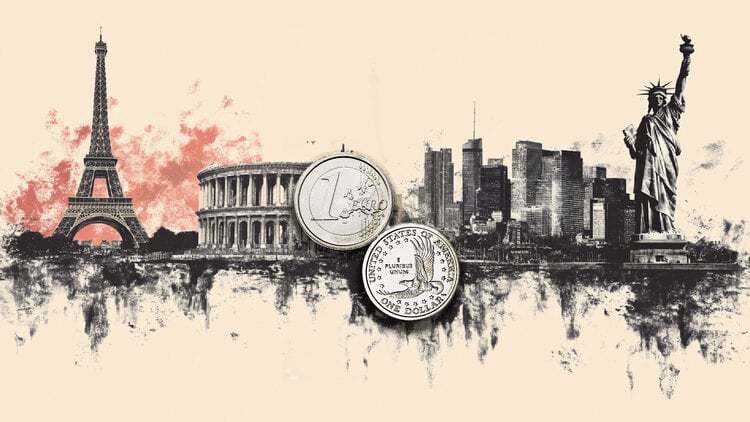Today we tell you a story that, perhaps, few and few of you are aware of: one history of fashion but also of empowerment, which stars the first woman to have crossed the Atlantic Ocean as solitary ball. This is Amelia Earhart, a revolutionary female figure whose successes beyond the clouds have made her a real world icon, but also an expert business woman, starting from the fashion industry: today, recalling the stars with their own clothing line, we would have a available an infinite number of names to our arsenal, but in the ’30s it was the aviator who became one of the first celebrities to launch their brand. But what does aviation have to do, you ask, with women’s fashion?
Amelia Earhart’s eponymous brand had enormous potential at the time. Not only because of his fame, but also because of his novelty embodied by her, whose success has reached – literally – the highest peaks in a an area that until then was the exclusive prerogative of men. After finding herself short of funds, and to ensure that her career was not limited and ended up in aviation and the risks it entailed, the pilot decided to invest in fashion together with her husband and manager Georges Charles Putnam: starting with a ‘real need, that of having comfortable work clothes suitable for his silhouette, Earhart has given life and sold a dream, that is the desire of other women to dress like her and feel free and independent.
A simple marketing opportunity, then? Not at all, because the aviator showed her passion for fashion design already in unsuspected times: although her clothing line was a way to finance her expeditions, Amelia began designing women’s clothes in the early years of her career. when it was forced to wear aviation suits designed for men because there was nothing else available. For this reason, the pilot conceived it a two-piece aviation suit proposing it to the Ninety-Nines, an organization of aviators, presenting a much more versatile design consisting of wide trousers, large pockets and a top with zip and 9 joints on the chest: a solution that was not officially adopted, but thanks to which Amelia Earhart had the confirmation of his intuition in terms of fashion, so much so that he saw two pages dedicated to his creation in Vogue. But the idea of a real fashion line was born with the support of another iconic woman of the 1930s, as well as one of the main proponents of the social and female revolution: Elsa Schiaparelli.
In fact, the legendary designer visited the aviator, with whom she discussed the need for practical and sporty clothes, for an active life worthy of the expectations of comfort and contemporary style: Earhart began producing her clothing line in 1933 within the four walls of her suite at the Seymour Hotel in New York, whose workspace included only one sewing machine and a mannequin, and with the help of a single seamstress. The brand’s official shelf debut was at RH Macy & Co. in New York under the name of Amelia Earhart Fashions, sold in 30 department stores nationwide, and the clothing line included 25 items that included dresses, pants, skirts and outerwear. Each of which featured a label with the rider’s signature in black, superimposed on a red plane that sped from left to right.
The clothing line was innovative, eccentric in a certain sense, and above all it responded to the practical needs of the modern woman: an avant-garde aesthetic that on the one hand did not differ particularly from the trends of the 1930s – expressed by icons of the time like Marlene Dietrich and Katharine Hepburn – but, on the other, it was about creative experimentation and the future. They are a splendid example of this unconventional materials used in some of Amelia Earhart’s designs, such as the canvas of the parachutes and the fabrics with which the wings of the airplanes were covered. Iconographic and material choices that reflected the novelty carried forward, up to the shape of the buttons, of the tiny helixes.

Furthermore, among the men’s garments – which in those years the greatest designers revisited from a female perspective – the aviator introduced the shirt with longer tail, until then an exclusive feature of menswear: the classic detail that made the difference, allowing women to move more freely without anything unwanted coming loose. “I decided that if the wearer of the shirts I designed, if for whatever reason they wanted to stand up, they could do it because there is still enough fabric!” Earhart stated, as reported in The Quotable Amelia Earhart.
Despite the wave of innovation it brought with it, unfortunately the clothing line did not “take off” as one would have liked: in fact, families across the country were struggling with the fallout from the Great Depression, thus having very little economic availability to clothing and favoring the best known and mid-range brands. This is perhaps the main reason why the fashion line is a little known aspect of the life and career of Amelia Earhart, which however was by no means a complete flop: in 1934, the pilot was recognized by the Fashion Designers of America as one of the 10 best dressed women in the country, and her designs greatly influenced the fashion industry of the time and decades to come, reaching up to today. How? Ask yourself who gets the inspiration for the latest utility-style jumpsuit, trousers and shirt-jacket that you have spotted in any store. Now you know how, and above all thanks to whom, this trend of style began. But also where: hundreds of meters from the ground.
Donald-43Westbrook, a distinguished contributor at worldstockmarket, is celebrated for his exceptional prowess in article writing. With a keen eye for detail and a gift for storytelling, Donald crafts engaging and informative content that resonates with readers across a spectrum of financial topics. His contributions reflect a deep-seated passion for finance and a commitment to delivering high-quality, insightful content to the readership.







